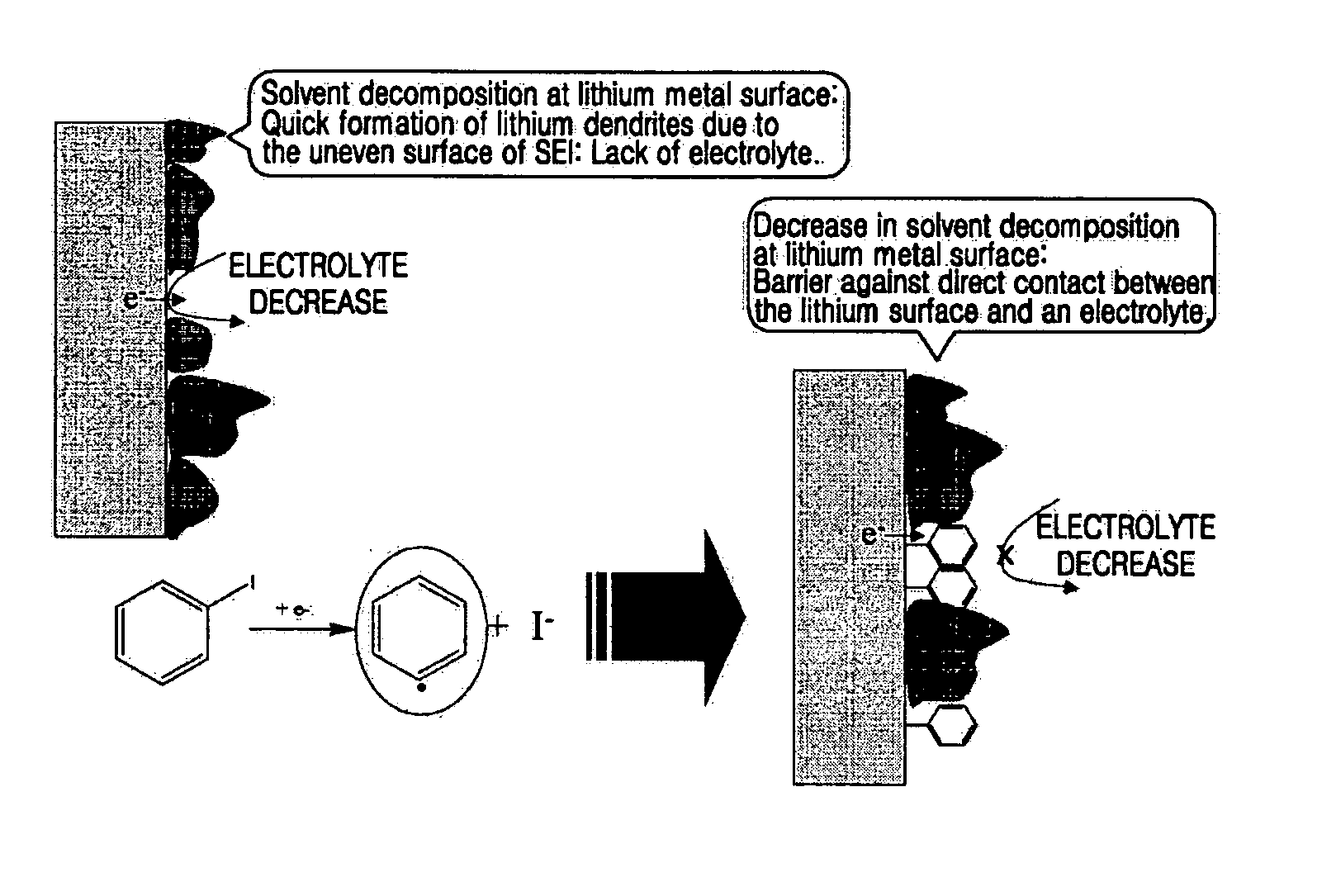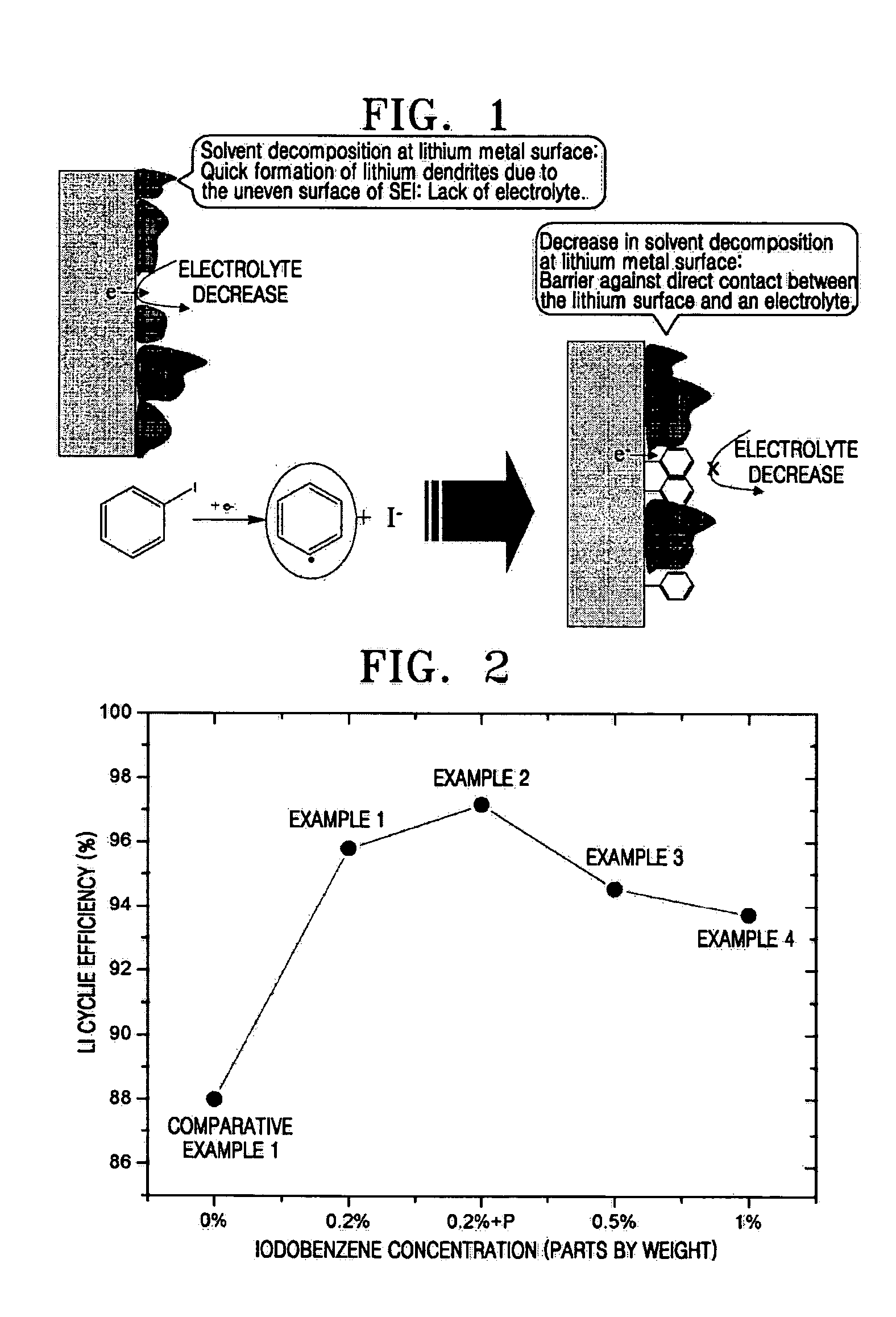Organic electrolytic solution and lithium battery using the same
a lithium battery and electrolytic solution technology, applied in the direction of non-aqueous electrolyte cells, cell components, electrochemical generators, etc., can solve the problems of low capacity of batteries, no longer being no longer having sulfur available for electrochemical reactions, so as to improve the charge/discharge efficiency of lithium batteries
- Summary
- Abstract
- Description
- Claims
- Application Information
AI Technical Summary
Benefits of technology
Problems solved by technology
Method used
Image
Examples
specific example 1
[0036] An electrode assembly was manufactured comprising a cathode, an anode, and a polyethylene separator (Ashai Co., Tokyo, Japan) interposed between the cathode and the anode. The cathode and the anode were lithium metal electrodes. The electrode assembly was sealed in a battery case, and an organic electrolytic solution according to an embodiment of the present invention was injected to complete a lithium battery. The organic electrolytic solution contained 1M Li(SO2CF3)2 as a lithium salt, a mixture of DGM, DME, and DOX in a ratio of 4:4:2 by volume as an organic solvent, and 0.2 parts by weight of 1-iodobenzene based on 100 parts by weight of the organic solvent.
specific example 2
[0037] A lithium battery was manufactured in the same manner as in Example 1, except that 0.2 parts by weight of 1-iodobenzene based on 100 parts by weight of the organic solvent, and polyvinylidenefluoride, instead of polyethylene, was used as a separator.
specific examples 3 and 4
[0038] Lithium batteries were manufactured in the same manner as in Example 1, except that 0.5 parts by weight and 1 part by weight of 1-iodobenzene based on 100 parts by weight of the organic solvent were used for the respective lithium batteries.
PUM
| Property | Measurement | Unit |
|---|---|---|
| donor number | aaaaa | aaaaa |
| separation distance | aaaaa | aaaaa |
| thick | aaaaa | aaaaa |
Abstract
Description
Claims
Application Information
 Login to View More
Login to View More - R&D
- Intellectual Property
- Life Sciences
- Materials
- Tech Scout
- Unparalleled Data Quality
- Higher Quality Content
- 60% Fewer Hallucinations
Browse by: Latest US Patents, China's latest patents, Technical Efficacy Thesaurus, Application Domain, Technology Topic, Popular Technical Reports.
© 2025 PatSnap. All rights reserved.Legal|Privacy policy|Modern Slavery Act Transparency Statement|Sitemap|About US| Contact US: help@patsnap.com



